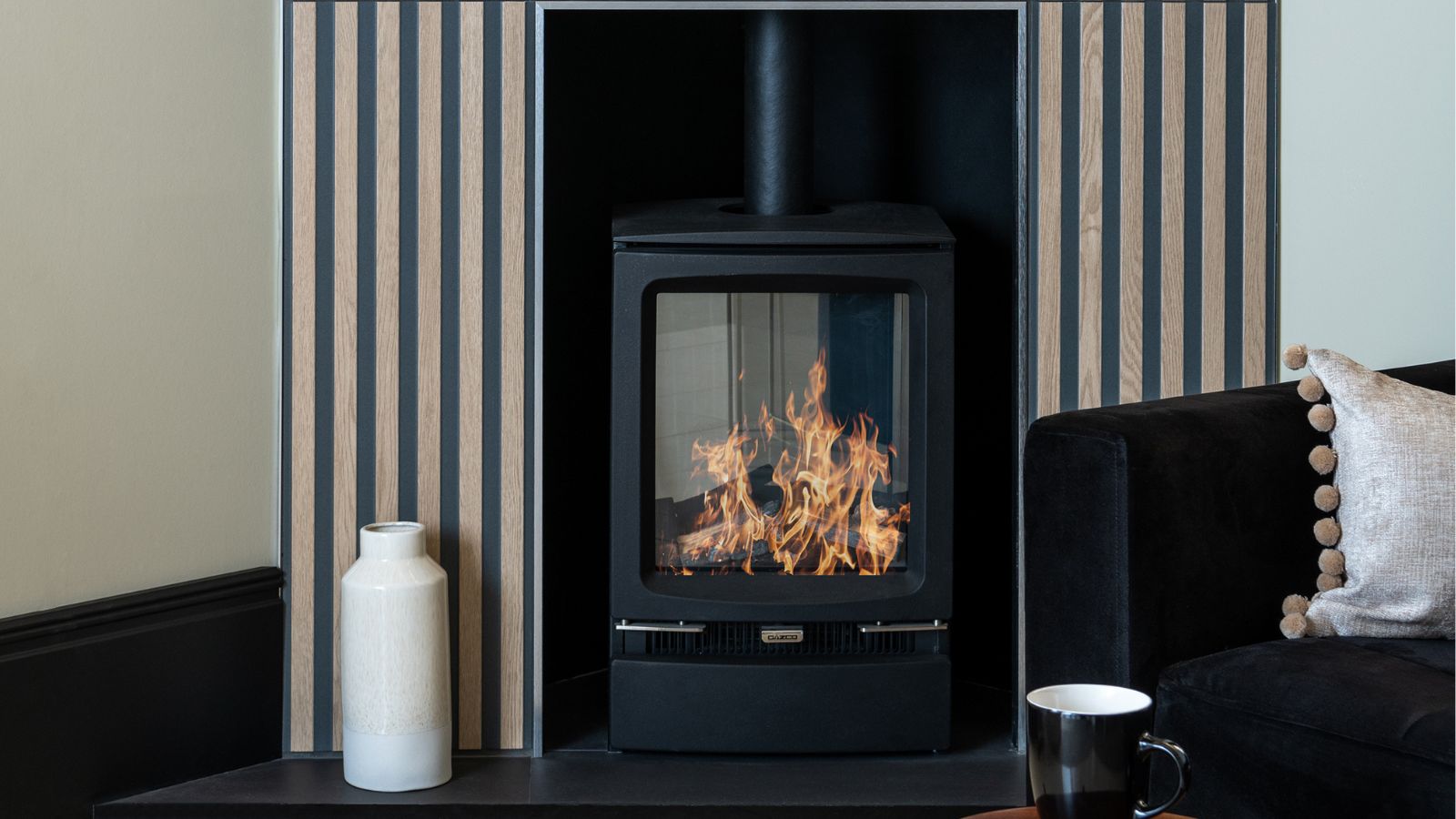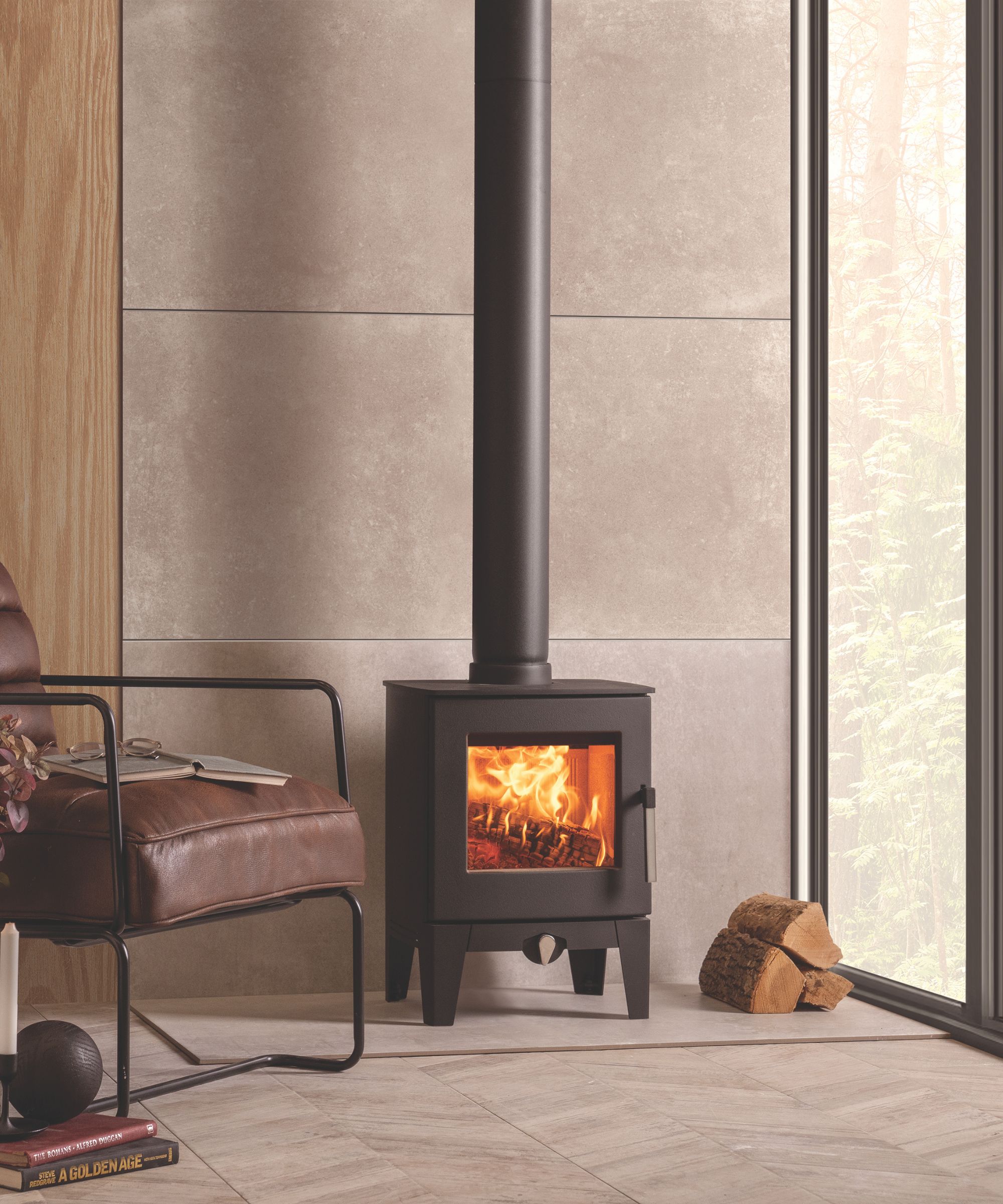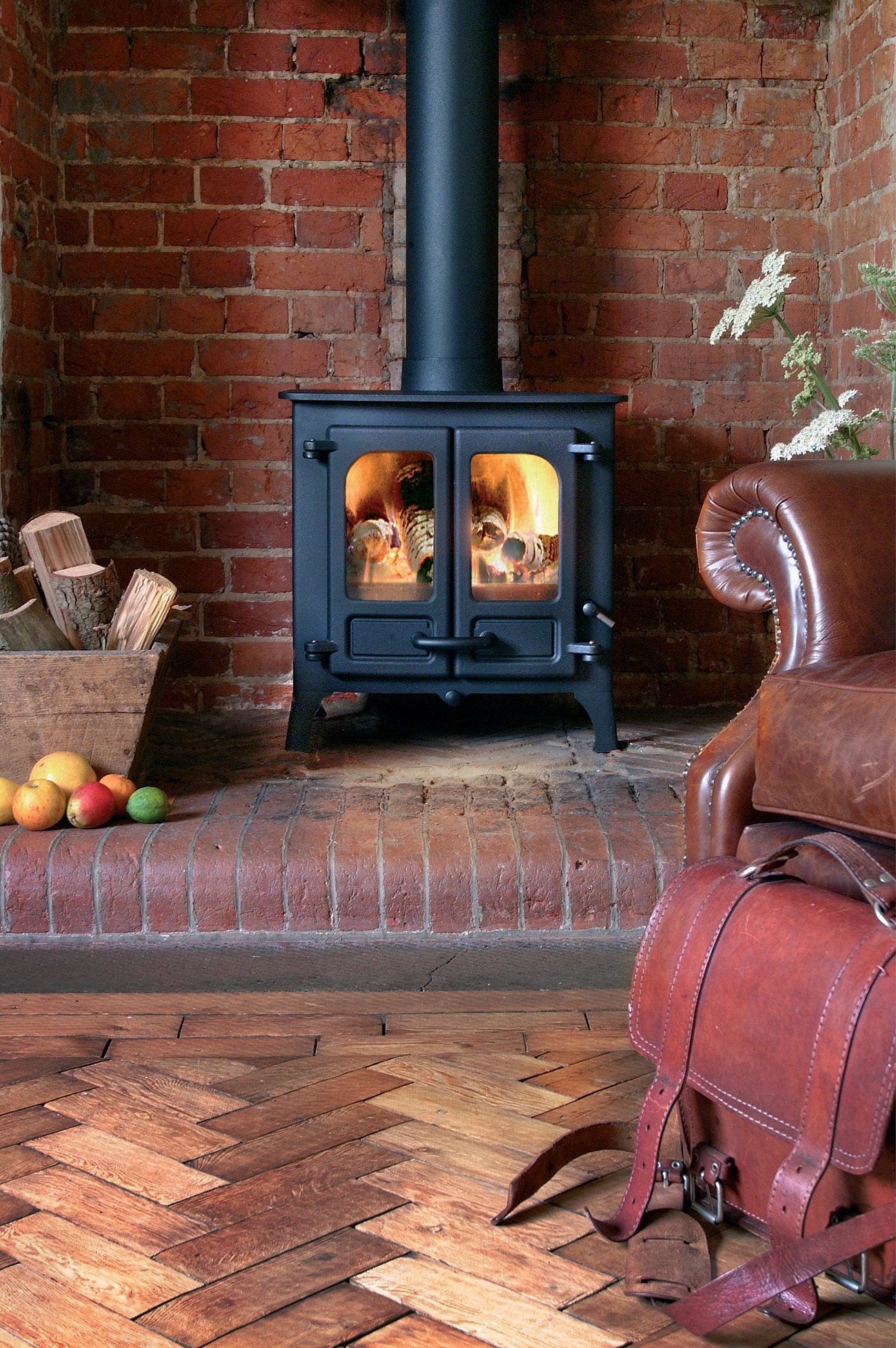Log burner planning permission — what experts say you should know
From building regulations to planning permission, this is what you need to know before installing a log burner in your home

Log burners are an increasingly popular addition to homes, bringing warmth, energy efficiency, and a touch of rustic charm. But before you settle in for cosy nights by the fire, it’s essential to know whether planning permission is required. This can depend on various factors, such as the type of property you live in – particularly if it’s a listed building – or if you’re in a conservation area.
Whether you're upgrading an existing fireplace or incorporating a log burner into a new extension, understanding the rules and regulations is essentialey. While planning permission isn’t always necessary, Building Regulations must be followed to ensure your stove is installed safely and efficiently.
So, do you need planning permission to install a log burning stove in your home? Read on to find out what the experts have to say.
Log burner planning permission
"If you're unsure about whether planning permission is required, it's a good idea to check with your local planning authority before starting any work installing a log burner or constructing a new chimney," explains Paula Higgins, Founder and CEO of HomeOwners Alliance. "They can provide specific guidance based on your location and the nature of the project."
Here’s a general guide to help you determine whether planning permission is necessary for your log burner installation.

Paula Higgins is the founder and CEO of HomeOwners Alliance, which exists to restore trust in home ownership, lobby for policies and industry practices to get a better deal for homeowners and those who aspire to own. HomeOwners Alliance also gives practical help and support to homeowners facing some of the biggest and most complex decisions of their lives.
Planning Permission for New Builds and Extensions

If you’re planning a new build or an extension, log burner installation might not automatically be covered by your overall planning application. According to Paula Higgins, “the installation of a wood burner must comply with Building Regulations for chimneys, stoves and fireplaces (specifically Approved Document J), which governs safety aspects such as ventilation and flue design.”
Higgins recommends hiring a HETAS-registered installer to ensure the log burner meets all the necessary regulations. “If your installer isn’t HETAS-registered, you’ll need to notify your local building control authority, who will inspect the installation for compliance,” she explains. This extra step can come with additional costs, so it’s something to keep in mind during your project planning.
Replacing an Existing Fireplace with a Log Burner
While open fires offer that traditional fireplace look, when comparing an open fire vs a log burner, log burners are far more efficient. They offer superior heat retention, eco-friendly fuel consumption, and are considerably safer, as they reduce the risk of stray sparks and embers.
If you’re thinking of replacing a gas fire with a log burner, the process might be simpler than you expect. Planning permission is typically not needed for this kind of swap, but Jon Butterworth, Director of Arada Stoves, emphasises the importance of safety. “Safety should be your first priority when installing any appliance, none more so than with a wood-burning or multi-fuel stove,” he says.

Jon Butterworth is Managing Director of Arada Stoves, one of the UK's leading suppliers of stoves including solid fuel, gas, boiler and bioethanol options, as well as outdoor products too.
Placement is important. Building Regulations enforce minimum distances between a wood burning stove and any nearby surfaces to prevent fire hazards. This distance can vary depending on the stove model, but generally, the minimum distance is around 150mm to 300mm from the sides and rear of the stove to any combustible surface. For the front, there’s usually a minimum distance of 300mm to protect against sparks. You should always check the manufacturer’s guidelines, and a HETAS-registered installer will be able to ensure these distances are adhered to.
Ventilation is another key factor to consider. Log burner ventilation requirements are governed by Part J of Building Regulations, which stipulates that stoves must have adequate air supply. “Ideally, the stove should draw fresh air from outside, directly into the appliance, rather than from the room itself,” Jon Butterworth explains. This not only improves efficiency but also enhances safety. However, Jon points out that "not all stoves have this option, and not all Direct Air connections supply 100% of combustion air from the outside. 100% Direct Air stoves are often referred to as “Room Sealed” appliances.”
"When replacing an existing fire with a wood burner, you will also need to ensure that the chimney or flue is suitable for the new stove," adds Paula Higgins, CEO of HomeOwners Alliance. "You may find it necessary to install a flue liner."
Listed buildings and conservation areas

For those living in listed buildings or a designated area like a conservation zone or National Park, stricter rules will apply. According to Paula Higgins, "If you live in a listed building, you will need listed building consent to ensure the installation preserves the historical and architectural integrity of the building. You may need to consult with conservation officers in your local authority or relevant bodies like Historic England."
Paula also notes that, "You will likely need planning permission to install a log burner in a conservation area or National Park, as they will want to ensure that any external flues are discreet and appropriate for the area."
FAQs
Do you need planning permission to install a log burner in a Smoke Control Area?
"If you live in a Smoke Control Area, you are limited to installing a Defra-exempt woodburner, which is approved for use in these areas, or you must use smokeless fuels," explains Paula Higgins, CEO of HomeOwners Alliance. "Defra Smoke Control Areas are usually in urban and densely populated areas. Cities such as London, Birmingham, Manchester are designated as Defra Smoke Control Areas but you should check with your local authority."
When do you require planning permission for a new chimney?
If your log burner installation includes the construction of a new chimney, planning permission is required if the chimney exceeds one metre above the roofline. This is particularly important in conservation areas, AONBs, or if you live in a listed building.
But aside from planning permission, when it comes to wood burning stove regulations, you’ll need to consider your chimney and hearth too. According to Paula Higgins, "If there is an existing chimney, you will need to check for suitability and may need a liner to safely handle the woodburner's operation."
"You will also need to check your hearth," Paula adds. "This is the floor of your fireplace and where the wood burning stove will sit. Your stove must be placed on a non-combustible material like granite, slate or glass. It’s also important to check the size of your stove because this can determine the dimensions and thickness of your hearth so it doesn’t get too hot."
Is it expensive to install a log burner?
Log burner installation costs can vary depending on several factors, including the type of stove, the complexity of the installation, and whether additional work, such as chimney construction, is required. On average, installation costs range from £700-£3,500. However, if you live in a listed building or conservation area, additional permissions and requirements could drive up the price.
If you are ready to install a log burner in your home, take a look at these freestanding log burner ideas and stylish corner log burner ideas for inspiration.
Get the Homebuilding & Renovating Newsletter
Bring your dream home to life with expert advice, how to guides and design inspiration. Sign up for our newsletter and get two free tickets to a Homebuilding & Renovating Show near you.

Gabriella is an interiors journalist and has a wealth of experience creating interiors and renovation content. She was Homebuilding & Renovating's former Assistant Editor as well as the former Head of Solved at sister brand Homes & Gardens, where she wrote and edited content addressing key renovation, DIY and interior questions.
She’s spent the past decade crafting copy for interiors publications, award-winning architects, and leading UK homeware brands. She also served as the Content Manager for the ethical homeware brand Nkuku.
Gabriella is a DIY enthusiast and a lover of all things interior design. She has a particular passion for historic buildings and listed properties, and she is currently in the process of renovating a Grade II-listed Victorian coach house in the West Country.
